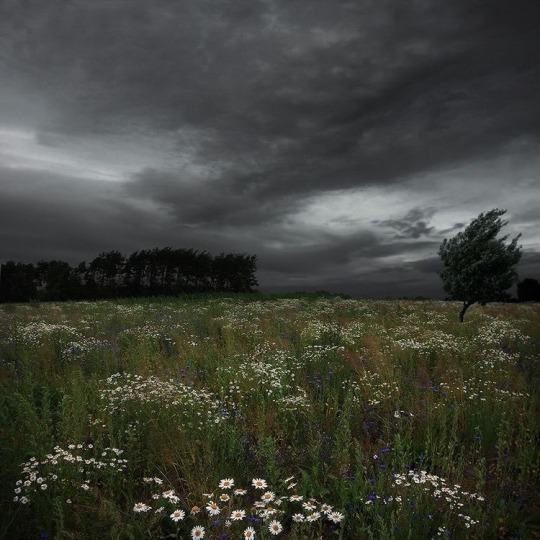My own suspicion is that the Universe is not only queerer than we suppose, but queerer than we can suppose. --J.B.S. Haldane-- Rachael - Atlanta -GSU Mad Scientist-in-Training (Astronomy PhD Student) This is my super spectacular (mostly) space blog!! I also blog cats, science, math, and whatever else happens to delight me!
Don't wanna be here? Send us removal request.
Photo

2022 December 20
Thor’s Helmet Image Credit & Copyright: Hannah Rochford
Explanation: Thor not only has his own day (Thursday), but a helmet in the heavens. Popularly called Thor’s Helmet, NGC 2359 is a hat-shaped cosmic cloud with wing-like appendages. Heroically sized even for a Norse god, Thor’s Helmet is about 30 light-years across. In fact, the cosmic head-covering is more like an interstellar bubble, blown with a fast wind from the bright, massive star near the bubble’s center. Known as a Wolf-Rayet star, the central star is an extremely hot giant thought to be in a brief, pre-supernova stage of evolution. NGC 2359 is located about 15,000 light-years away toward the constellation of the Great Overdog. This remarkably sharp image is a mixed cocktail of data from narrowband filters, capturing not only natural looking stars but details of the nebula’s filamentary structures. The star in the center of Thor’s Helmet is expected to explode in a spectacular supernova sometime within the next few thousand years.
∞ Source: apod.nasa.gov/apod/ap221220.html
118 notes
·
View notes
Photo

2022 November 3
M33: The Triangulum Galaxy Image Credit & Copyright: Processing - Robert Gendler Data - Hubble Legacy Archive, KPNO, NOIRLab, NSF, Aura, Amateur Sources
Explanation: The small, northern constellation Triangulum harbors this magnificent face-on spiral galaxy, M33. Its popular names include the Pinwheel Galaxy or just the Triangulum Galaxy. M33 is over 50,000 light-years in diameter, third largest in the Local Group of galaxies after the Andromeda Galaxy (M31), and our own Milky Way. About 3 million light-years from the Milky Way, M33 is itself thought to be a satellite of the Andromeda Galaxy and astronomers in these two galaxies would likely have spectacular views of each other’s grand spiral star systems. As for the view from the Milky Way, this sharp image combines data from telescopes on and around planet Earth to show off M33’s blue star clusters and pinkish star forming regions along the galaxy’s loosely wound spiral arms. In fact, the cavernous NGC 604 is the brightest star forming region, seen here at about the 1 o'clock position from the galaxy center. Like M31, M33’s population of well-measured variable stars have helped make this nearby spiral a cosmic yardstick for establishing the distance scale of the Universe.
∞ Source: apod.nasa.gov/apod/ap221103.html
61 notes
·
View notes
Photo

Geranium Meteor - Jorn van Leeuwen, 2013.
Dutch, b. 1982 -
Oil on linen, 53 x 85 cm.
3K notes
·
View notes
Video
youtube
2022 November 2
A Partial Eclipse of an Active Sun Video Credit: Ralf Burkart; h/t Maciej Libert (AG)
Explanation: Watch for three things in this unusual eclipse video. First, watch for a big dark circle to approach from the right to block out more and more of the Sun. This dark circle is the Moon, and the video was made primarily to capture this partial solar eclipse last week. Next, watch a large solar prominence hover and shimmer over the Sun’s edge. A close look will show that part of it is actually falling back to the Sun. The prominence is made of hot plasma that is temporarily held aloft by the Sun’s changing magnetic field. Finally, watch the Sun’s edge waver. What is wavering is a dynamic carpet of hot gas tubes rising and falling through the Sun’s chromosphere – tubes known as spicules. The entire 4-second time-lapse video covers a time of about ten minutes, although the Sun itself is expected to last another 5 billion years.
∞ Source: apod.nasa.gov/apod/ap221102.html
27 notes
·
View notes
Video
tumblr
epiclava_A River of molten Lava! #epic#lava#river#kilauea#volcano#bigisland#hawaii#epiclava
2K notes
·
View notes
Photo

Forest glow | imikegraphics
Location: Lapland, Finland
8K notes
·
View notes
Photo










No, There Isn’t A Black Hole At The Center Of The Earth
“Even under the most optimistic, realistic scenario, there can be no black holes that survive for more than a fraction-of-a-second inside the Earth. If we only have three spatial dimensions, the particles that exist — whether in terrestrial particle accelerators or from the natural cosmic accelerators found in space — can never create a black hole here on Earth. But if there’s a fourth spatial dimension, they can theoretically be created, although the LHC has been unsuccessful in creating and detecting them thus far.
Even in that exotic scenario, however, the laws of physics very definitively prohibit them from remaining stable, as they will decay away. Even if you contrive a scenario to maximize their growth rate, it’s extraordinarily unsustainable, as the growth rate will drop below the decay rate in short order, causing them to evaporate completely. We know enough science to robustly conclude that there isn’t a black hole at the center of the Earth, and any scientist or layperson can follow these same steps to figure out that same conclusion for themselves.”
There’s a paper that’s been identified from last year that’s nothing more than a word-salad of scientific terms, likely put together by an artificial intelligence to expose the sham peer review practices of predatory journals. But it began with the notion that there’s a black hole at the center of the Earth causing it all. Is that physically possible?
Even in the most exotic imaginable (but still realistic) scenarios, it isn’t. Here’s the science behind why, and how you can convince yourself in the process!
228 notes
·
View notes
Video
youtube
2020 September 30
Sonified: Eagle Nebula Pillars Image Credit: NASA, ESA, & The Hubble Heritage Team (STScI/AURA); Sonification: NASA, CXC, SAO, K. Arcand, M. Russo & A. Santaguida
Explanation: Yes, but have you ever experienced the Eagle Nebula with your ears? The famous nebula, M16, is best known for the feast it gives your eyes, highlighting bright young stars forming deep inside dark towering structures. These light-years long columns of cold gas and dust are some 6,500 light-years distant toward the constellation of the Serpent (Serpens). Sculpted and eroded by the energetic ultraviolet light and powerful winds from M16’s cluster of massive stars, the cosmic pillars themselves are destined for destruction. But the turbulent environment of star formation within M16, whose spectacular details are captured in this combined Hubble (visible) and Chandra (X-ray) image, is likely similar to the environment that formed our own Sun. In the featured video, listen for stars and dust sounding off as the line of sonification moves left to right, with vertical position determining pitch.
∞ Source: apod.nasa.gov/apod/ap200930.html
65 notes
·
View notes
Photo






Voter deadlines for the general election, which is on November 3, are quickly approaching and vary based on state.
You can register to vote in 5 minutes or less at https://turbovote.org/
Please check with your state registrar for specifics on voting in the upcoming election, as requirements might vary based on your voting method.
28K notes
·
View notes
Photo










Ask Ethan: Will The Universe Ever Run Out Of Energy?
“The universe is theorized to end with a “big freeze” when even black holes evaporate. Dark energy is thought to expand (but not become more dense) as space expands. Assuming the universe continues to expand at that point of the big freeze, will dark energy eventually stabilize the universes temperature or will it continue to decrease ever closer to absolute zero?”
It should come as no surprise that entropy is increasing in the Universe, that there’s progressively less and less fuel for stars, and that dark energy continues to push all bound structures apart from the ones that aren’t bound to them as time goes on. It appears, to the best of our current knowledge, that we’re headed for a “big freeze” or “heat death” fate: where there’s no more energy to be extracted and put to work in the Universe for any purposes at all.
But is this necessarily our ultimate fate? Or does dark energy potentially give us a way to avoid it? The science is suggestive, but not decisive. Here’s how we’ll learn more.
71 notes
·
View notes
Photo

2020 September 18
Arp 78: Peculiar Galaxy in Aries Image Credit & Copyright: Bernard Miller
Explanation: (xxxedit and linkxxx) Peculiar spiral galaxy Arp 78 is found within the boundaries of the head strong constellation Aries, some 100 million light-years beyond the stars and nebulae of our Milky Way galaxy. Also known as NGC 772, the island universe is over 100,000 light-years across and sports a single prominent outer spiral arm in this detailed cosmic portrait. Its brightest companion galaxy, compact NGC 770, is toward the upper right of the larger spiral. NGC 770’s fuzzy, elliptical appearance contrasts nicely with a spiky foreground Milky Way star in matching yellowish hues. Tracking along sweeping dust lanes and lined with young blue star clusters, Arp 78’s large spiral arm is likely due to gravitational tidal interactions. Faint streams of material seem to connect Arp 78 with its nearby companion galaxies.
∞ Source: apod.nasa.gov/apod/ap200918.html
60 notes
·
View notes
Photo

Looking good, Jupiter (and Europa!). Is there life on that moon? @nasahubble https://www.instagram.com/p/CFR7bs3nxqi/?igshid=1rjt7zzs550tq
118 notes
·
View notes
Photo

You are doing better than you think you are.
6K notes
·
View notes
Text
The Lives, Times, and Deaths of Stars
Who among us doesn’t covertly read tabloid headlines when we pass them by? But if you’re really looking for a dramatic story, you might want to redirect your attention from Hollywood’s stars to the real thing. From birth to death, these burning spheres of gas experience some of the most extreme conditions our cosmos has to offer.

All stars are born in clouds of dust and gas like the Pillars of Creation in the Eagle Nebula pictured below. In these stellar nurseries, clumps of gas form, pulling in more and more mass as time passes. As they grow, these clumps start to spin and heat up. Once they get heavy and hot enough (like, 27 million degrees Fahrenheit or 15 million degrees Celsius), nuclear fusion starts in their cores. This process occurs when protons, the nuclei of hydrogen atoms, squish together to form helium nuclei. This releases a lot of energy, which heats the star and pushes against the force of its gravity. A star is born.
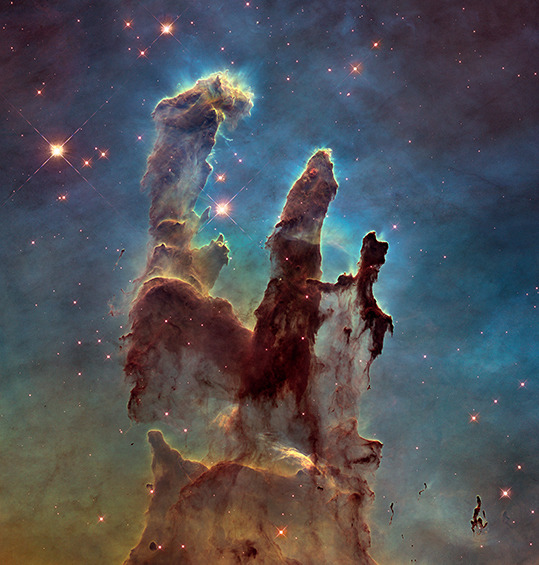
Credit: NASA, ESA and the Hubble Heritage Team (STScI/AURA)
From then on, stars’ life cycles depend on how much mass they have. Scientists typically divide them into two broad categories: low-mass and high-mass stars. (Technically, there’s an intermediate-mass category, but we’ll stick with these two to keep it straightforward!)
Low-mass stars
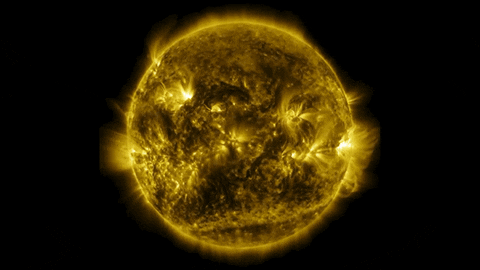
A low-mass star has a mass eight times the Sun’s or less and can burn steadily for billions of years. As it reaches the end of its life, its core runs out of hydrogen to convert into helium. Because the energy produced by fusion is the only force fighting gravity’s tendency to pull matter together, the core starts to collapse. But squeezing the core also increases its temperature and pressure, so much so that its helium starts to fuse into carbon, which also releases energy. The core rebounds a little, but the star’s atmosphere expands a lot, eventually turning into a red giant star and destroying any nearby planets. (Don’t worry, though, this is several billion years away for our Sun!)

Red giants become unstable and begin pulsating, periodically inflating and ejecting some of their atmospheres. Eventually, all of the star’s outer layers blow away, creating an expanding cloud of dust and gas misleadingly called a planetary nebula. (There are no planets involved.)
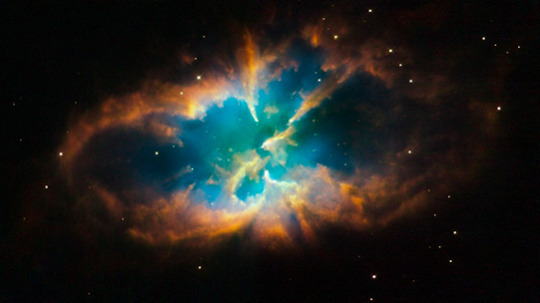
Credit: NASA, ESA, and the Hubble Heritage Team (STScI/AURA)
All that’s left of the star is its core, now called a white dwarf, a roughly Earth-sized stellar cinder that gradually cools over billions of years. If you could scoop up a teaspoon of its material, it would weigh more than a pickup truck. (Scientists recently found a potential planet closely orbiting a white dwarf. It somehow managed to survive the star’s chaotic, destructive history!)

High-mass stars
A high-mass star has a mass eight times the Sun’s or more and may only live for millions of years. (Rigel, a blue supergiant in the constellation Orion, pictured below, is 18 times the Sun’s mass.)
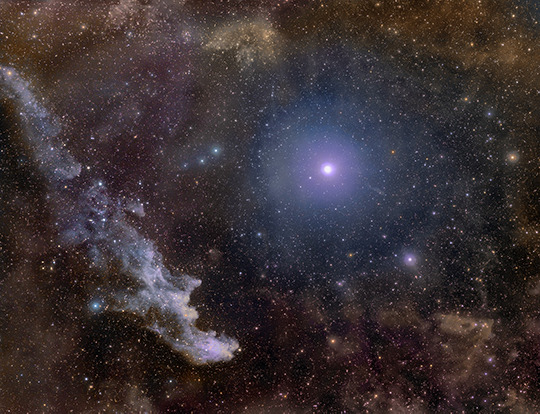
Credit: Rogelio Bernal Andreo
A high-mass star starts out doing the same things as a low-mass star, but it doesn’t stop at fusing helium into carbon. When the core runs out of helium, it shrinks, heats up, and starts converting its carbon into neon, which releases energy. Later, the core fuses the neon it produced into oxygen. Then, as the neon runs out, the core converts oxygen into silicon. Finally, this silicon fuses into iron. These processes produce energy that keeps the core from collapsing, but each new fuel buys it less and less time. By the point silicon fuses into iron, the star runs out of fuel in a matter of days. The next step would be fusing iron into some heavier element, but doing requires energy instead of releasing it.
The star’s iron core collapses until forces between the nuclei push the brakes, and then it rebounds back to its original size. This change creates a shock wave that travels through the star’s outer layers. The result is a huge explosion called a supernova.

What’s left behind depends on the star’s initial mass. Remember, a high-mass star is anything with a mass more than eight times the Sun’s — which is a huge range! A star on the lower end of this spectrum leaves behind a city-size, superdense neutron star. (Some of these weird objects can spin faster than blender blades and have powerful magnetic fields. A teaspoon of their material would weigh as much as a mountain.)
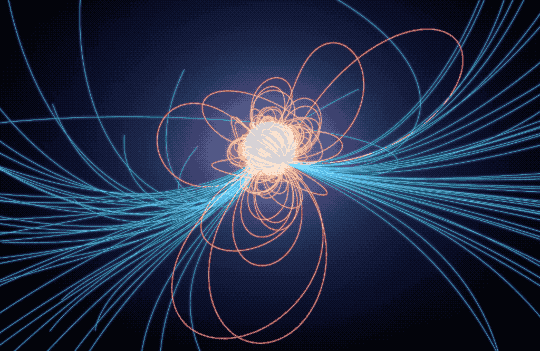
At even higher masses, the star’s core turns into a black hole, one of the most bizarre cosmic objects out there. Black holes have such strong gravity that light can’t escape them. If you tried to get a teaspoon of material to weigh, you wouldn’t get it back once it crossed the event horizon — unless it could travel faster than the speed of light, and we don’t know of anything that can! (We’re a long way from visiting a black hole, but if you ever find yourself near one, there are some important safety considerations you should keep in mind.)
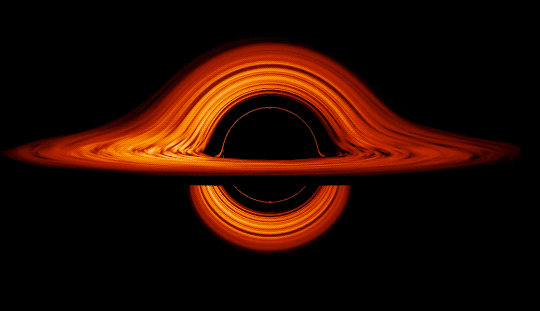
The explosion also leaves behind a cloud of debris called a supernova remnant. These and planetary nebulae from low-mass stars are the sources of many of the elements we find on Earth. Their dust and gas will one day become a part of other stars, starting the whole process over again.
That’s a very brief summary of the lives, times, and deaths of stars. (Remember, there’s that whole intermediate-mass category we glossed over!) To keep up with the most recent stellar news, follow NASA Universe on Twitter and Facebook.
Make sure to follow us on Tumblr for your regular dose of space: http://nasa.tumblr.com.
4K notes
·
View notes


